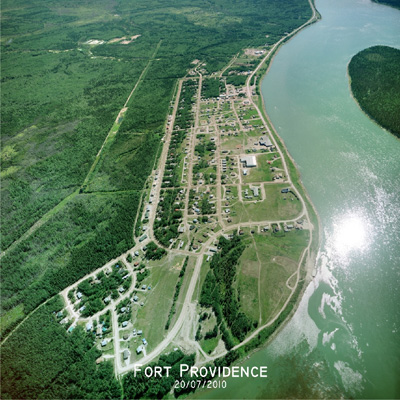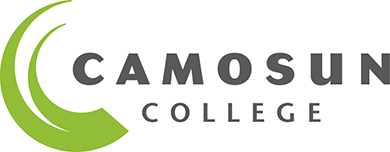Blazing a trail from the north
Archived Content
This archived web page remains online for reference, research or record-keeping purposes. This page will not be altered or updated and may contain out of date information. If you’re looking for specific information and haven’t found it, please contact communications@camosun.ca.
Aboriginal students find a home away from home

Camosun students from Fort Providence (L to R) Destiny Thom, Janelle Minoza, & Sonia Minoza
March 22, 2011
Camosun is drawing Aboriginal students from Fort Providence like a magnet. Following the trek of others from this little town in the Northwest Territories, seven more eager students recently toured the Camosun experience.
"It's cool that we've made a trail for other students in the north to follow," says Destiny Thom, Camosun student from Fort Providence.
Regard for relationships
At Camosun, Aboriginal education means more than just classes with Indigenous content. It means encircling Aboriginal learners with a supportive community and stretching the welcome for many miles.

Fort Providence, North West Territories
Two years ago, Destiny and her friend Sonia Minoza were encouraged to apply to Camosun by Lois Philipp, a school principal in Fort Providence who became familiar with Camosun's Aboriginal programming while taking a Masters of Education at the University of Victoria.
"It seemed like a natural fit with lots of support from the Camosun end," says Philipp. Encouraged by the Aboriginal support evident on the AECC website, Philipp felt comfortable calling Faye Martin, an Aboriginal Advisor in AECC to help sort out a delay in their applications. Martin made sure Sonia and Destiny were packed and down to Victoria within a week.
Destiny had enjoyed visiting Victoria for an Aboriginal youth conference the year before. However, it was intimidating to actually leave a community the same size as the number of students at Camosun, where everyone knows everyone and feels like family. To ease the transition, Destiny's grandmother, Margaret Thom, Deputy Commissioner of the Northwest Territories, journeyed down with the young women before handing them over to Martin, who helped them find housing, funding and learn their way around the college and city. Thom even sat in on the two young women's Indigenous College Prep certificate classes, leaving only when she knew they were comfortably settled.
"This has been a powerful experience for me," says Martin. "When Margaret followed traditional protocol including the gifting of tobacco, I was reminded of how important it is to follow our teachings. I feel honoured to be a part of these students' transition."
Six months later, Janelle Minoza followed her sister, Sonia, to Camosun. "I remember sitting in Faye's office as she handed me bus tickets, and I was just overwhelmed, not only by her kindness, but also because I had no idea how to catch a bus downtown, or even where downtown was," says Janelle.

Fort Providence students visiting Camosun March 2011: Back L to R - Mike Lieshman (teacher), Bradley Thom, Dylan McLeod, Ryan Tourangeau. Front L to R - Margaret Thom (Deputy Commissioner of the Northwest Territories) Erin Nadil, Jeannie Minoza, Lory Ann Bertrand, Benny Gargan.
Building success upon success
"Faye has been instrumental in the success of our students," says Philipp. "They have someone who works with them to help define their academic goals, someone with whom they can touch base for support and who knows where they are from. Camosun does not feel large, overwhelming or impersonal."
"Success builds upon success," says Philipp. She was so pleased with Camosun's reception of her community's students she has twice invited Martin to fly to Yellowknife, providing a personal driver so Martin could promote Camosun's Aboriginal education options to the Dehcho First Nations students in the elementary and secondary schools in Fort Providence, Fort Simpson, and Fort Liard. Now also attending Camosun are four more Fort Providence students: Ruben Sanderson, Mike Krutko, Jennifer McKenzie and Dori-Anne Lefoin. And the influx continues.
"The best part is meeting the other people and the community feeling to the programs," says Destiny, now in her second year and taking the Indigenous Family Support certificate. "And the program has changed my perspective. Through it, I have had to learn about myself before I could learn about others. This was hard to begin with but then it just flowed."
"Finding identity is a huge part of going to school," says Sonia, "And we've learned about independence."
From your community—to ours—and back. Camosun brings education full circle
Camosun welcomes over 900 students representing more than 50 Aboriginal nations including Métis and Inuit, as well as nearly five per cent of the total Camosun student population.
Find out more about the full array of Camosun's Indigenous programs and Aboriginal services at camosun.ca/aboriginal.
Last updated: April 16, 2019 12:38 pm


